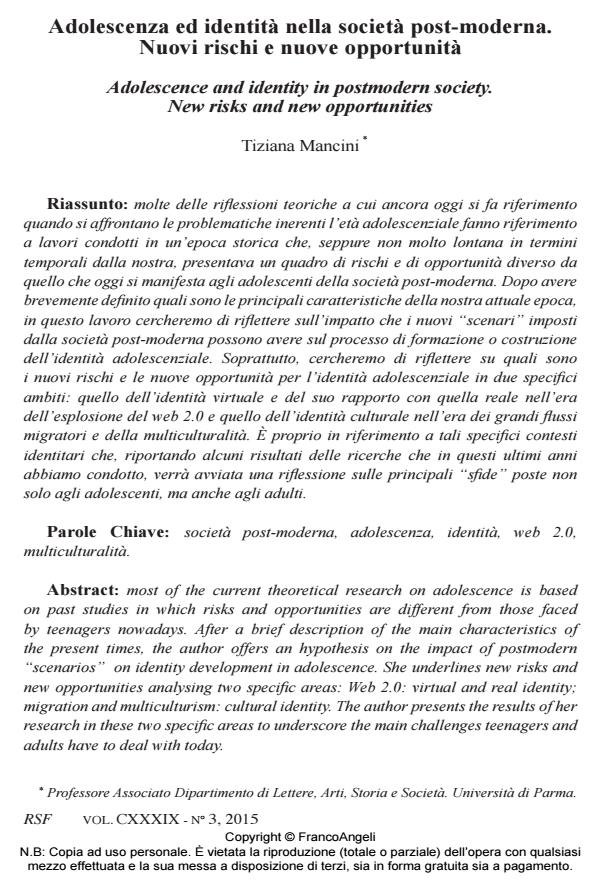Adolescence and identity in postmodern society. New risks and new opportunities
Journal title RIVISTA SPERIMENTALE DI FRENIATRIA
Author/s Tiziana Mancini
Publishing Year 2015 Issue 2015/3
Language Italian Pages 18 P. 29-46 File size 2194 KB
DOI 10.3280/RSF2015-003003
DOI is like a bar code for intellectual property: to have more infomation
click here
Below, you can see the article first page
If you want to buy this article in PDF format, you can do it, following the instructions to buy download credits

FrancoAngeli is member of Publishers International Linking Association, Inc (PILA), a not-for-profit association which run the CrossRef service enabling links to and from online scholarly content.
Most of the current theoretical research on adolescence is based on past studies in which risks and opportunities are different from those faced by teenagers nowadays. After a brief description of the main characteristics of the present times, the author offers an hypothesis on the impact of postmodern "scenarios" on identity development in adolescence. She underlines new risks and new opportunities analysing two specific areas: Web 2.0: virtual and real identity; migration and multiculturism: cultural identity. The author presents the results of her research in these two specific areas to underscore the main challenges teenagers and adults have to deal with today.
Keywords: Postmodern society, adolescence, identity, web 2.0, multiculturalism
Tiziana Mancini, Adolescenza ed identità nella società post-moderna. Nuovi rischi e nuove opportunità in "RIVISTA SPERIMENTALE DI FRENIATRIA" 3/2015, pp 29-46, DOI: 10.3280/RSF2015-003003